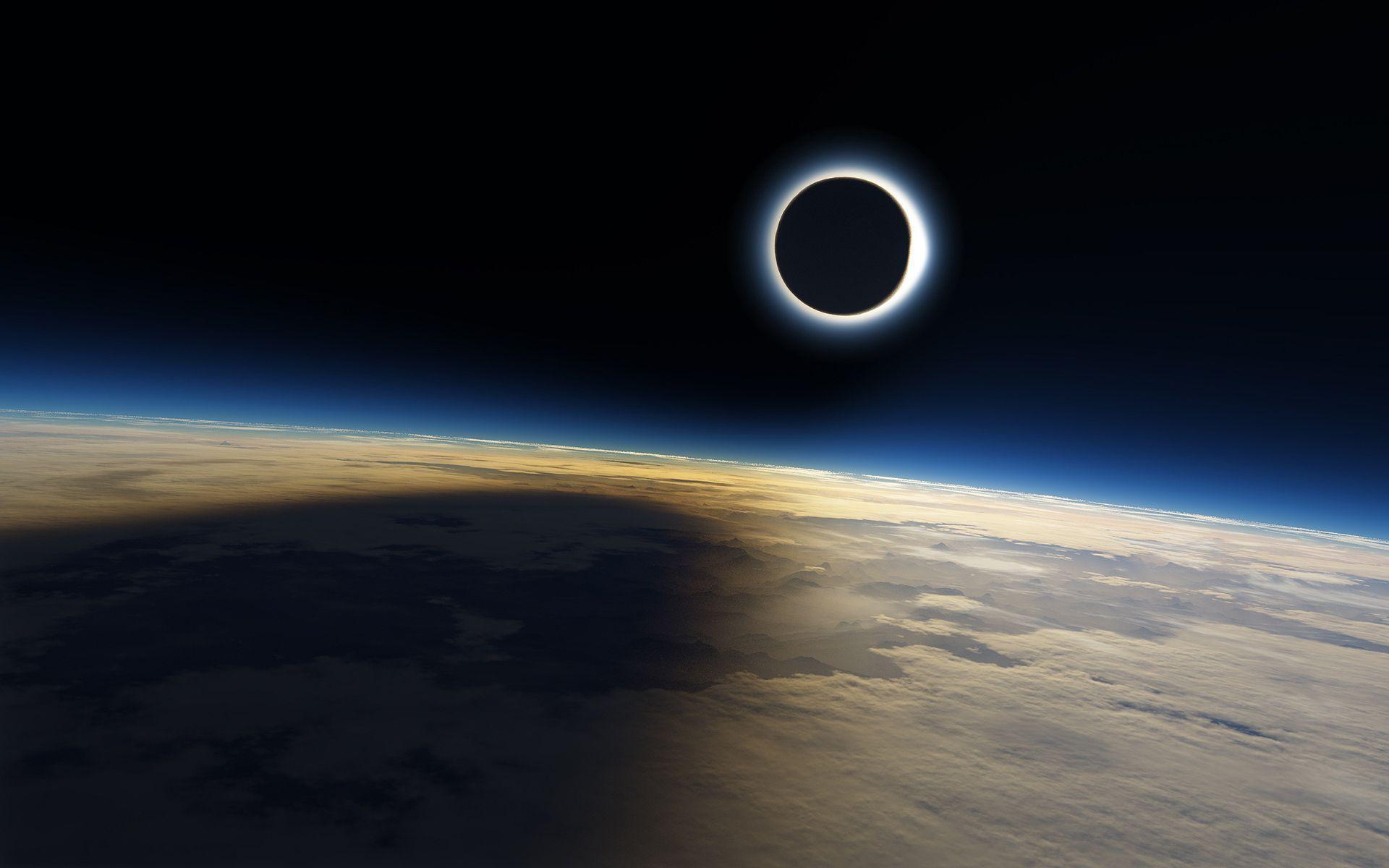

Like other thinkers of his day, Aristotle believed that all heavenly bodies were spherical, because to him heavenly bodies were a reflection of divine perfection, and the sphere is the most outstandingly perfect geometrical figure. The astronomical views of this Greek philosopher are well-known to us, thanks to his two works, known to us as Meteorology and On the Heavens, dating from the 4th century BC. The first demonstration of an astrophysical nature resulting from eclipses is the one given by Aristotle concerning the fact that the Earth is round. Aristotle’s geometrical argument is shown in several ancient astronomy texts, including Cosmographia, by Petrus Apianus and Gemma Frisius, 1581. Indeed, if the Earth were square, or triangular, its shadow projected onto the disk of the Moon at the time of an eclipse would not appear circular.

The Earth is round According to Aristotle, lunar eclipses prove that the Earth is round. During a total eclipse, the Sun’s invisible empire appears : eruptions and prominences rise above the level of the photosphere, and colour the Sun’s inner atmosphere, known as the chromosphere. It is on this new vision of the universe, which explains gravitation in terms of the ‘curvature of space-time’, that all our current knowledge of the origin, the structure, and the evolution of the universe, depends, by way of the fascinating concepts of an expanding universe, the Big Bang, and black holes. In a more surprising manner, in the 20th century, Einstein’s General Relativity, a fundamental theory about space, was tested experimentally for the first time, thanks to an eclipse. Eclipses also provoked the discovery of helium, the second most abundant element in the Sun, and in the universe as a whole.

Far from being the perfectly round, and sharply defined ball of hot gas that it appears to the eye – appropriately protected by suitable filters, of course – the Sun is found to be a sprawling giant, overflowing with energy, plasma, and particles, that extends its influence throughout the whole Solar System. In the 19th century, it was the normally invisible atmosphere of the Sun that was revealed thanks to eclipses. Indeed, back in antiquity, the proof that the Earth was round, and the first measurements of the respective sizes and distances of the Moon and Sun were deduced from the observation of eclipses. The first of these lessons concerned the celestial bodies directly involved in eclipses: namely the Earth, Moon, and Sun. SummaryĮclipses of the Sun and Moon have never ceased to provide us with a host of lessons about the nature of the universe around us. It is taken from a chapter of my book Glorious Eclipses, presented elsewhere in this blog. In view of the total solar eclipse of 2017 Aug 21 through the United States, this is a reminder of the role of solar eclipses in the developments of astronomy and astrophysics.


 0 kommentar(er)
0 kommentar(er)
